The Illuminated Bible; containing the old and new testaments.
The Illuminated Bible; containing the old and new testaments.
By Benedicta ARTHUR
Project Synopsis
I will be talking about the illuminated Bible of 1846 by the Harper brothers &co. This Bible was famous around this time because of its many images and the type of engravings it had. Around this same period there other Bibles in production but the Illuminated Bible stood out because of the way it was published. The parable of the Good Samaritan story from the Gospel will be analyzed.
| Categories | Bible |
| Title | The Illuminated Bible; containing the Old and New Testaments |
|---|---|
| Date | 1846 |
| Place | New York |
| Contributor(s) | School of Theology, Boston University |
| Language(s) | English |
| Source | https://archive.org/embed/illuminatedbible00adam |
| Format |
Introduction to the Bible
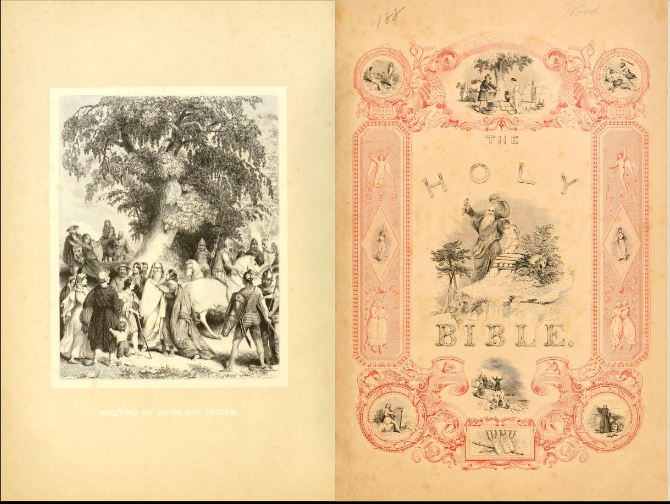
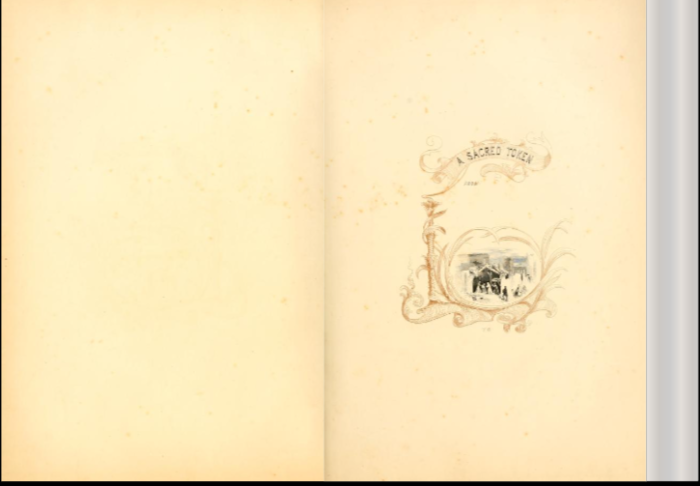
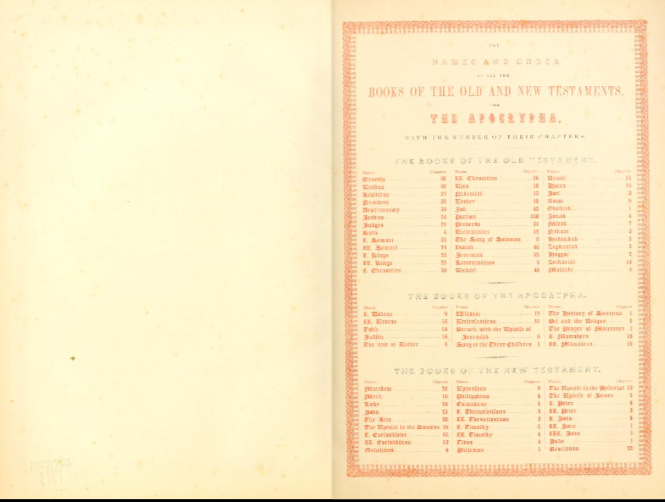
Originally, none of the four Harpers brothers had the notion to create a Bible. It was the local printer and engraver Joseph Alexander Adams who approached the Harpers with a proposition to create the most magnificent bible the country had ever seen. They had not printed a Bible in nearly Twenty years, even though their company was quickly rising to the top of the publishing industry in the country.
A total of over sixteen hundred pictures were what were supposed to make Adam’s edition so unique of this Bible. There have never been more than 100 images in an American-made Bible before. Adams intended to set his volume apart from others with his astounding quantity of engravings by putting the illustrations primarily on the same page as text, as opposed to separate sheets bound within the text, which was the more popular publishing technique.
Adams claimed to have created this marvel by means of a new printing technique known as electrotyping, which entailed applying a thin layer of copper to stereotype, woodblock, or intaglio plates to fortify them for use in high-pressure, high-speed presses. Large print runs of incredibly fine text and picture quality were made possible by electrotyping. The first book using this technique to be printed in the US was the Harpers’ Illuminated Bible.
Description | Analysis
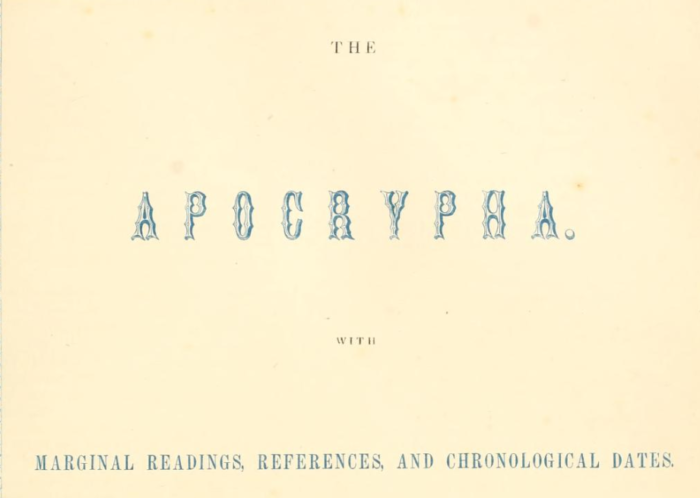
The illuminated Bible had detailed center-column cross-references showing the many places where the Apocrypha is quoted in the Old and the New Testaments. The complete work when bound weighed over 13 pounds and was printed on high quality paper.
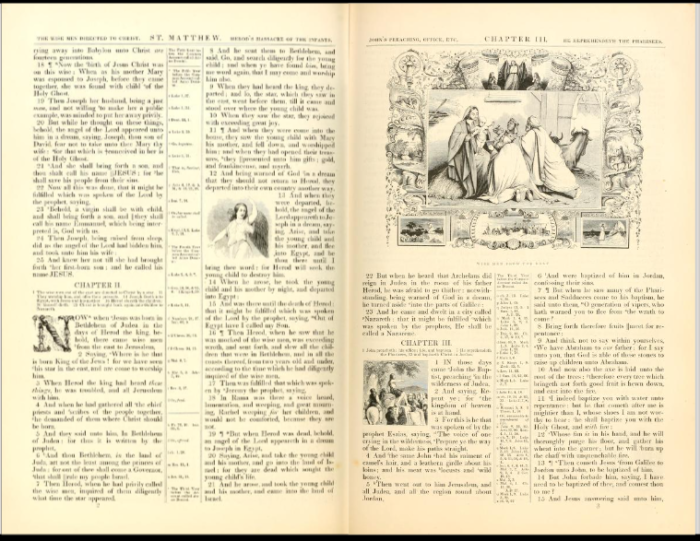
Around this period, people were more interested in how the text, message and the images related to each other and how best they could understand it. With the illuminated Bible by the Harpers brothers, it gave the audience the opportunity to see the image on the same page as the text, and how they could relate it.
Looking at the illustrations in the Bible, most of them explains and portrays the image and text in them. The Pictorial Bible published by Sir Charles Knight around the same time, did not have such, although it was illuminated with pictures, it was intended to make the objects described to in the Holy Scriptures familiar to the eyes of the reader.
Also, the Harpers illuminated Bible was emulated having this concept but changes where made in terms of format, page layout and it was issued in one thick volume. Unlike the pictorial Bible that was published in 3 volumes and had smaller page size.
THE GOSPEL
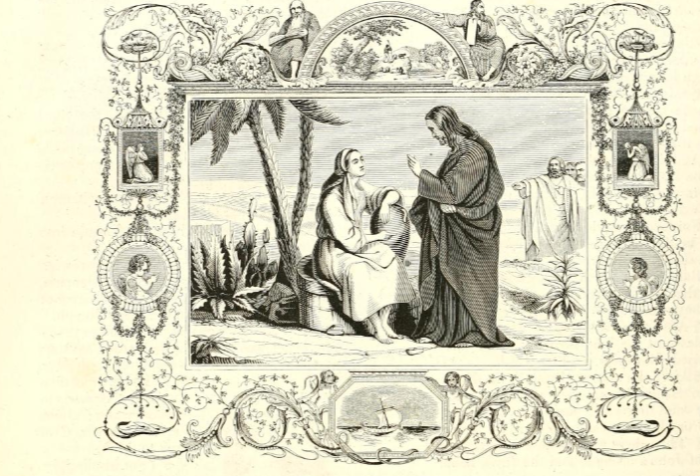
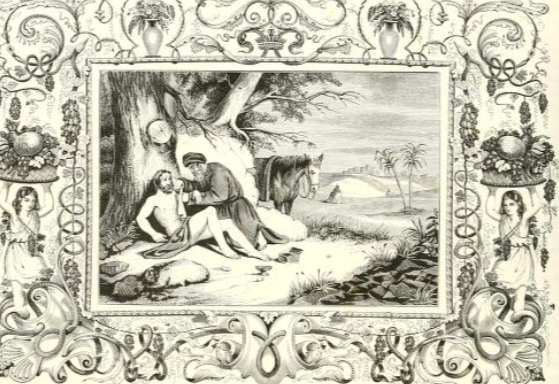
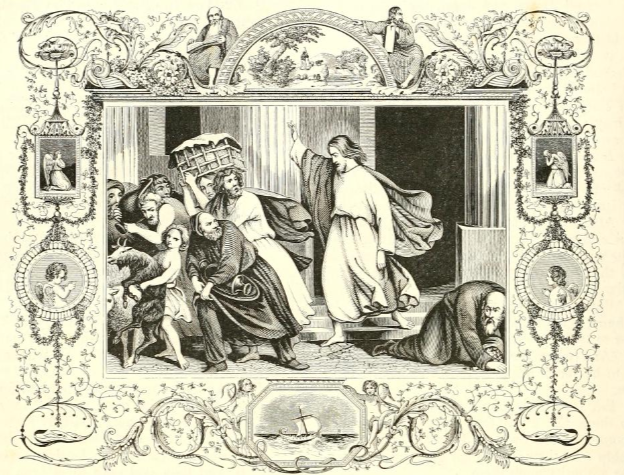
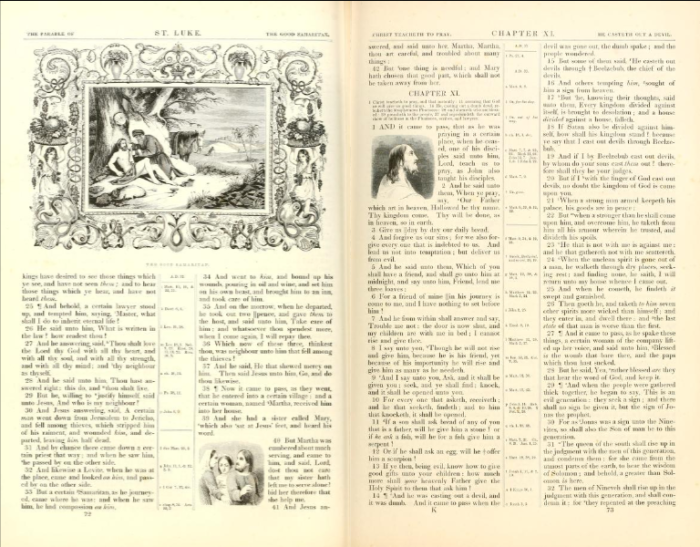
The gospel of St. Luke 10: 25-37, talks about the parable of the Good Samaritan. The story speaks about a man travelling and being attacked by robbers on his way. There were two passerby who saw the victim and did not attend to him. And the Good Samaritan came and helped the victim. The text depict the illustration made in the Bible, it has the Good Samaritan dressing the wounds of the victim, and his horse on standby. The area as in the vegetation was clear and good to see. In between the Bible it has the apocrypha that has similar texts related to the story being told in the Bible.
Comparing images around the same time.
Around this period a lot of illustrations were made from this story. Some of the illustrations had different images being told of the story. Below is the medieval period how the story’s illustration was portrayed in some churches and Bible.
On the left, is the story of the Good Samaritan painted at the Romanesque church of Moissac. It displays different parts of the story on each of the sides of the capital of a column in the nave of the church. Then on the Right, is the story that appeared in the Picture Bible prepared at the Monastery of St. Bertin located at Saint-Omer in Northern France. The illustration shows the traveler being attacked, the priest and the Levite passing by and finally the Samaritan leading the victim on his horse after having bound up the traveler’s wounds.
To the left we have the famous Italian Renaissance painter Francesco Bessano’s painting, where we see the Good Samaritan dressing the wounds of the victim. And to the right is also, the French illustartor Gustavo Doré, in his painting we see them at the inn and the Good Samaritan helping to bring the victim.
Conclusion
One thing that all these various illustrations have in common is the care and sympathy shown by the figure representing the Samaritan for the figure who is the victim. This care and sympathy derive from the words of Jesus in this Gospel. By making the compassionate person a member of a despised minority within Palestine, Jesus reminds us of all that our neighbor is the person whom we meet who needs our help, not just the person next door. It is the stranger who may command our compassion and mercy, not only the members of our own family group or clan.
Bibliography
Noll A. Mark. (2022). America’s book; The Rise and Decline of a Bible Civilization, (1794-1911). DOI: 10.1093/80/9780197623466.001.0001
Norman M. Jeremony.”Exploring the History of Information and Media through Timelines”.HistoryofInformation.com. January,2,2021. https://www.historyofinformation.com/detail.php?id=4409
“The Illuminated Bible : Containing the Old and New Testaments, Translated out the Original Tongues, and with the Former Translations Diligently Compared And Revised, with Marginal Readings, References, and Chronological Dates; Also, the Apocrypha, to Which Are Added a Chronological Index, an Index of Subjects Contained in the Old and New Testaments, Tables of Weights, Coins, Measures, a List of Proper Names, a Concordance, &c. : Adams, Joseph Alexander, 1803-1880 : Free Download, Borrow, and Streaming : Internet Archive.” https://archive.org/details/illuminatedbible00adam/page/72/mode/2up?view=theater&ui=embed&wrapper=false



